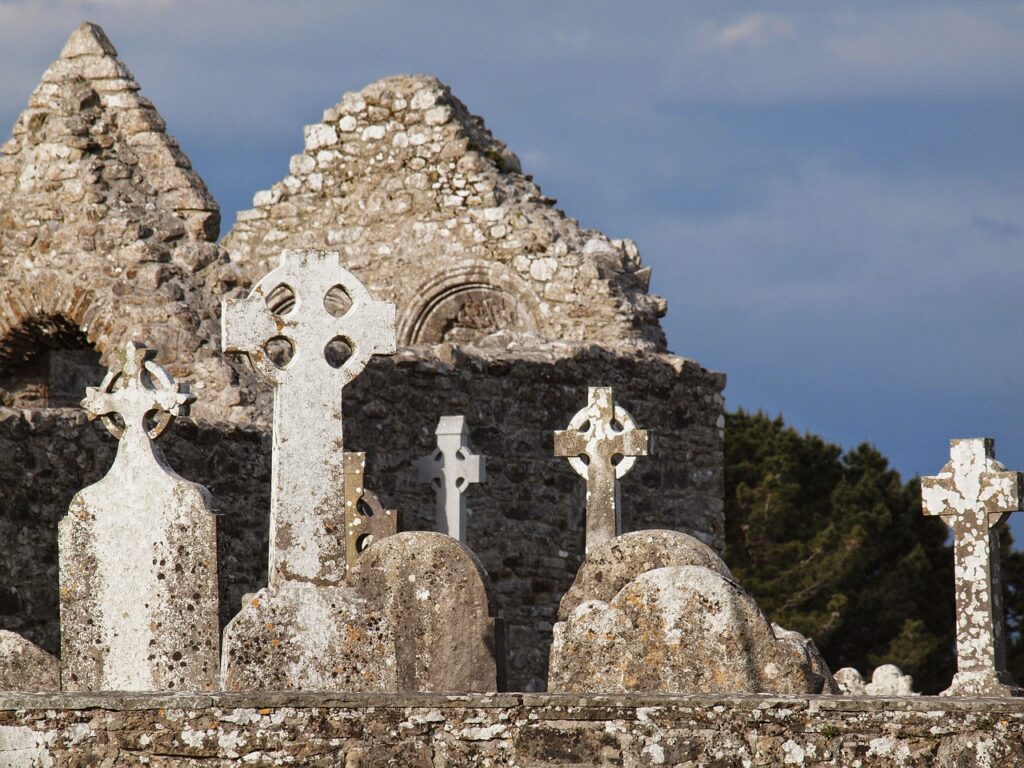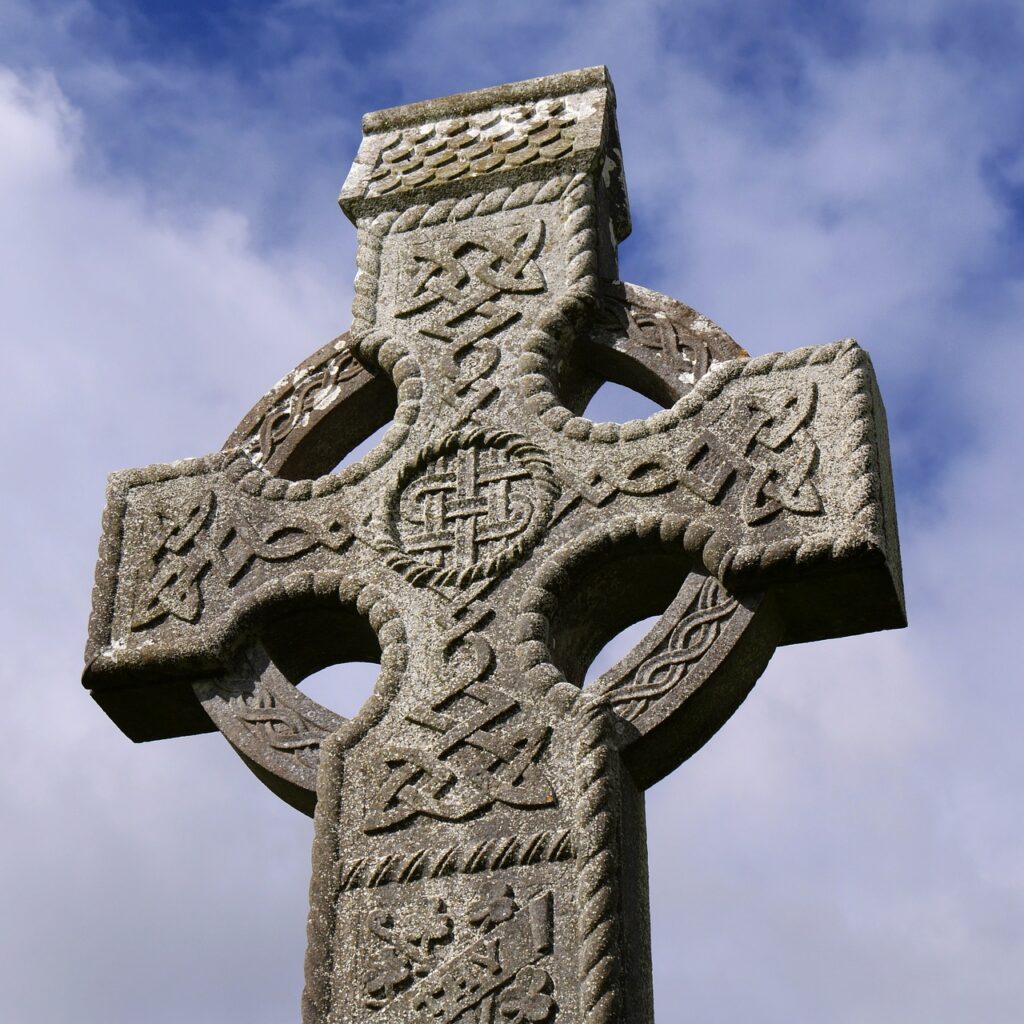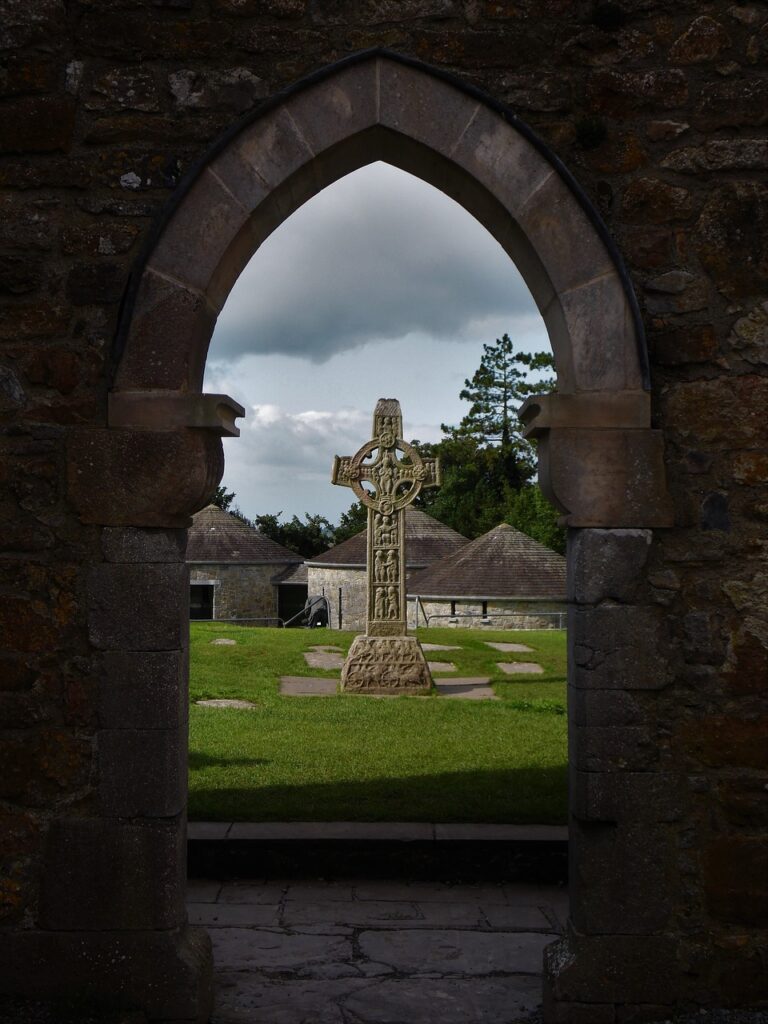
Nestled in the heart of Ireland (in County Offaly), Clonmacnoise is a fascinating monastic site that offers visitors a unique glimpse into the country’s rich Christian and cultural history. This ancient site is located on the banks of the River Shannon and has been a center of religious and cultural activity for over a thousand years.
The History
Clonmacnoise is situated at the intersection of the River Shannon and an ancient roadway that once connected Tara with the west of Ireland. Tara was the political and spiritual center of the ancient Irish kingdom of Meath and was the site of the coronation of the High Kings of Ireland. The monastery was founded in the 6th century by St. Ciarán.
The monastery quickly became a center of learning, attracting scholars from across Ireland and beyond. Over the centuries, Clonmacnoise grew in both size and influence, becoming one of the most important monastic sites in all of Ireland. At its peak in the 11th Century, it had grown to over 1,500 monks, and its influence extended well beyond Ireland, with visitors coming from as far away as Europe and the Middle East.
Over the centuries, the monastery was attacked and pillaged many times, most notably by the Vikings in the 9th century. However, it was always rebuilt and remained an important center of learning and worship throughout the Middle Ages. The site is dotted with numerous historic buildings, including a cathedral, two round towers, three high crosses, and many other ruins.
What are the Crosses?

A Celtic cross is a unique type of Christian cross that emerged in Ireland and other Celtic regions in the early Middle Ages. It is characterized by a cross with a circular or oval ring (known as a halo or nimbus) around the intersection of the cross arms.
The origins and symbolism of the Celtic cross are debated, but it is generally believed to be a fusion of the traditional Christian cross with earlier Celtic and Pagan motifs. The circle is often interpreted as a symbol of eternity or the divine, while the cross represents the sacrifice of Jesus Christ.
Celtic crosses can be found in various sizes and designs, with intricate knotwork and other decorative elements adorning the surface of the cross. They can be seen in many Irish religious sites, such as monasteries, churches, and graveyards, as well as in modern Irish art and jewelry. The Celtic cross has also become an important symbol of Irish and Celtic heritage, and is often used in tourism, marketing, and merchandise related to Ireland.
What to See
Today, Clonmacnoise is one of the most important early Christian sites in Ireland, and visitors can explore the many impressive ruins that still stand here. Highlights include the Round Tower, which was used as a lookout and as a place of refuge during times of attack, and the Cathedral, which is a stunning example of early Christian architecture.
Visitors can also explore the many other ruins that make up the site, including the ancient churches, the High Crosses, and the cemetery. Each of these structures has its own unique history and significance, and exploring them is a fascinating experience.

In addition to the ruins themselves, Clonmacnoise is also home to a number of exhibits and displays that provide visitors with a deeper understanding of the site’s history and significance. The Visitor Centre features a range of multimedia displays and artifacts that showcase the lives of the monks who lived and worked at Clonmacnoise.
Finally, no visit to Clonmacnoise would be complete without taking in the stunning views of the surrounding landscape. The site is located on the banks of the River Shannon, and the views of the river and the surrounding countryside are truly breathtaking.
How to Get There
By car, the journey from Dublin takes around 1 hour and 30 minutes, and the route is well signposted. Similarly from Galway, the journey takes approximately 1 hour and 20 minutes.
If you’re travelling by public transportation, there are several bus services that operate to and from Clonmacnoise. The closest bus stop is just a 5-minute walk from the site, making it easily accessible for those travelling by bus.
From Dublin, Bus Éireann operates a regular service to Clonmacnoise, with several departures daily. From Galway, Bus Éireann also operates a regular service, with several departures each day.
For those travelling by train, the closest railway station is in Athlone, which is around 16 km (10 miles) from Clonmacnoise. From Athlone, you can take a taxi or catch a bus to Clonmacnoise.
